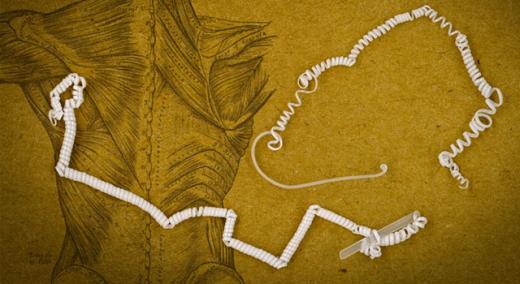The tiny coils in the fiber developed by MIT researchers curl even tighter when warmed up. This causes the fiber to contract, much like a muscle fiber. Credit: Felice Frankel, edited by MIT News
As a cucumber plant grows, it sprouts tightly coiled tendrils that seek out supports to pull the plant upward. This ensures the plant receives as much sunlight exposure as possible. Now, researchers at MIT have found a way to imitate this coiling-and-pulling mechanism to produce contracting fibers that could be used as artificial muscles for robots, prosthetic limbs, or other mechanical and biomedical applications.
|
ADVERTISEMENT |
Although many different approaches have been used for creating artificial muscles, including hydraulic systems, servo motors, shape-memory metals, and polymers that respond to stimuli, they all have limitations, including high weight or slow response times. The new fiber-based system, by contrast, is extremely lightweight and can respond very quickly, the researchers say. The findings have been reported in the journal Science.
The new fibers were developed by MIT postdoc Mehmet Kanik and MIT graduate student Sirma Örgüç, working with professors Polina Anikeeva, Yoel Fink, Anantha Chandrakasan, C. Cem Taşan, and five others. The group used a fiber-drawing technique to combine two dissimilar polymers into a single strand of fiber.
…

Add new comment